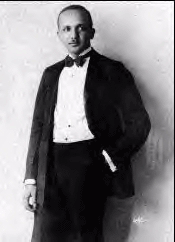31 - Fletcher Henderson’s “Chime Blues” is an Early Boogie Woogie Recording
by John Tennison — History of Boogie Woogie

According to one website (http://www.redhotjazz.com/fletcher.html) Henderson’s “Chime Blues” was recorded in “January of 1921” on Black Swan Records. However, according to historical accounts, Black Swan Records did not make its first recordings until April, 1921. Moreover, these historical accounts indicate that the first recordings of Black Swan Records did not include Fletcher Henderson’s “Chime Blues.” Moreover, the most authoritative document on the history of Fletcher Henderson and his music (“Hendersonia”, Jazz Monographs Number 4, 1973, Walter C. Allen) indicates that he recorded “Chime Blues” in “early 1923.” On Page 44, Hendersonia states”
“In early 1923, Fletcher Henderson recorded a pair of piano solos for Black Swan, which were issued on their rare 2100 series. Chime Blues features a walking bass, and although Henderson was never known as a boogie-woogie pianist, this must be one of the earliest such solos on record (with the possible exception of the mysterious Clay Custer’s [A.K.A. George Thomas] ‘The Rocks’ on OKeh 4809, recorded about this same time). It would be interesting to know where Henderson picked up this style!”
Moreover, on page 548, Hendersonia states, “....one of the earliest known examples of boogie-woogie bass takes place on Fletcher’s rare piano solo of Chime Blues.”
Bryan Rust’s authoritative three-volume set titled, “JAZZ AND RAGTIME RECORDS (1897-1942),” Malcolm Shaw, editor, indicates “circa March 1923” as the recording date for Henderson’s “Chime Blues.” Thus, this authoritative sources places the recording of “Chime Blues” in the month following the recording of “The Rocks,” not in 1921 as the Red Hot Jazz website had indicated. Of course, the word, “circa,” allows for wiggle room, in that it represents an approximation. Regardless of the dates of audio recordings, an indisputable fact is that Henderson’s circa March 1923 recording of “Chime Blues” occurred about 8 years after Artie Matthews’ 1915 sheet-music publication of “The Weary Blues, ” and about 7 years after the 1916 sheet-music publication of George W. Thomas’s “New Orleans Hop Scop Blues.”
Regardless of exact recording dates, both “The Rocks” and “Chime Blues” deserve recognition as being among the first audio recordings to use Boogie Woogie broken-octave walking bass lines containing an intrinsic swing-pulse in the left hand part. Moreover, these broken-octave, swung bass lines are qualitatively distinct from the duple-meter feel of the broken-octave bass lines in Joplin’s “Pine Apple Rag” and in Boone’s “Southern Rag Medley 2.”
Since Henderson was a demonstrator of the African American sheet music of his day, Henderson could easily have picked up the idea for the Boogie Woogie swinging broken-octave walking bass line either from this previously published sheet music of Artie Matthews or George Thomas, or by rushing out to emulate the bass line in “The Rocks” shortly after hearing the studio performance or recording of “The Rocks,” as recorded in February of 1923. However, since George Thomas notated the swing pulse of his 1916 music with grace notes rather than with eighth-note triplets or doted eighth-notes, it seems more likely that Henderson would have modeled a witnessed performance by someone who was playing with an swing-pulse intrinsic to the left hand. Else Henderson could have ended up with an interpretation that sounded more like Eubie Blake’s grace-noted (AKA “reverse Boogie Woogie”) broken octave bassline as Blake used in his 1917 piano roll recording of Blake’s “Charleston Rag.”
Another feature that suggests that Henderson was emulating either “The Weary Blues” or “New Orleans Hop Scop Blues” comes from comes from the fact that “Chime Blues” clearly copies the structure of “The Weary Blues” and “New Orleans Hop Scop Blues.” Specifically, “Chime Blues” begins with a Ragtime oom-pah pulse, transitions into a Boogie Woogie swinging broken-octave walking bass, and then returns to a Ragtime oom-pah pulse, making the resemblance of “Chime Blues” to the structure of “The Weary Blues” and “New Orleans Hop Scop Blues” unmistakable.
Also, both “The Rocks” and “Chime Blues” have rudimentary polyrhythmic interplay between the right and left hands. Both “Chime Blues” and “The Rocks” pre-date Meade Lux Lewis’s “Honky Tonk Train” and Clarence “Pine-Top” Smiths “Boogie Woogie” recordings.
If you are curious to hear “Chime Blues,” go to http://www.redhotjazz.com/fletcher.html. (I cannot guarantee that this link will always be active.)







